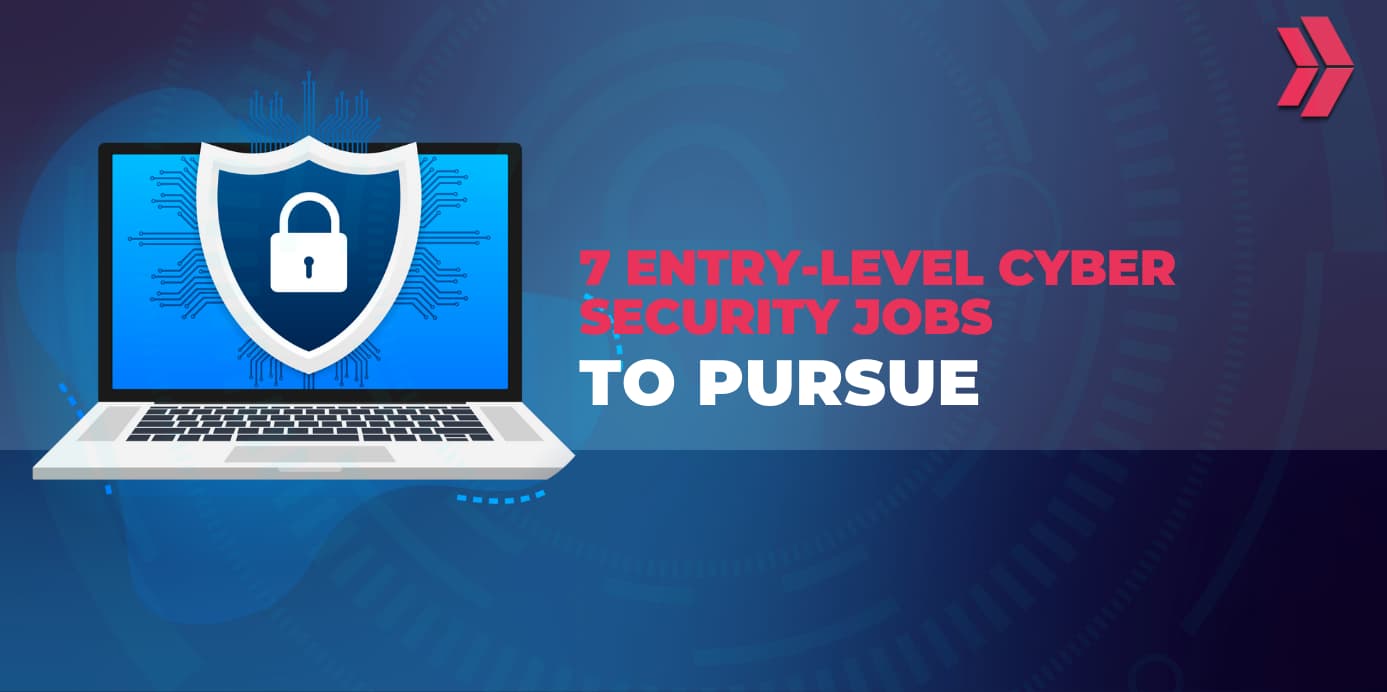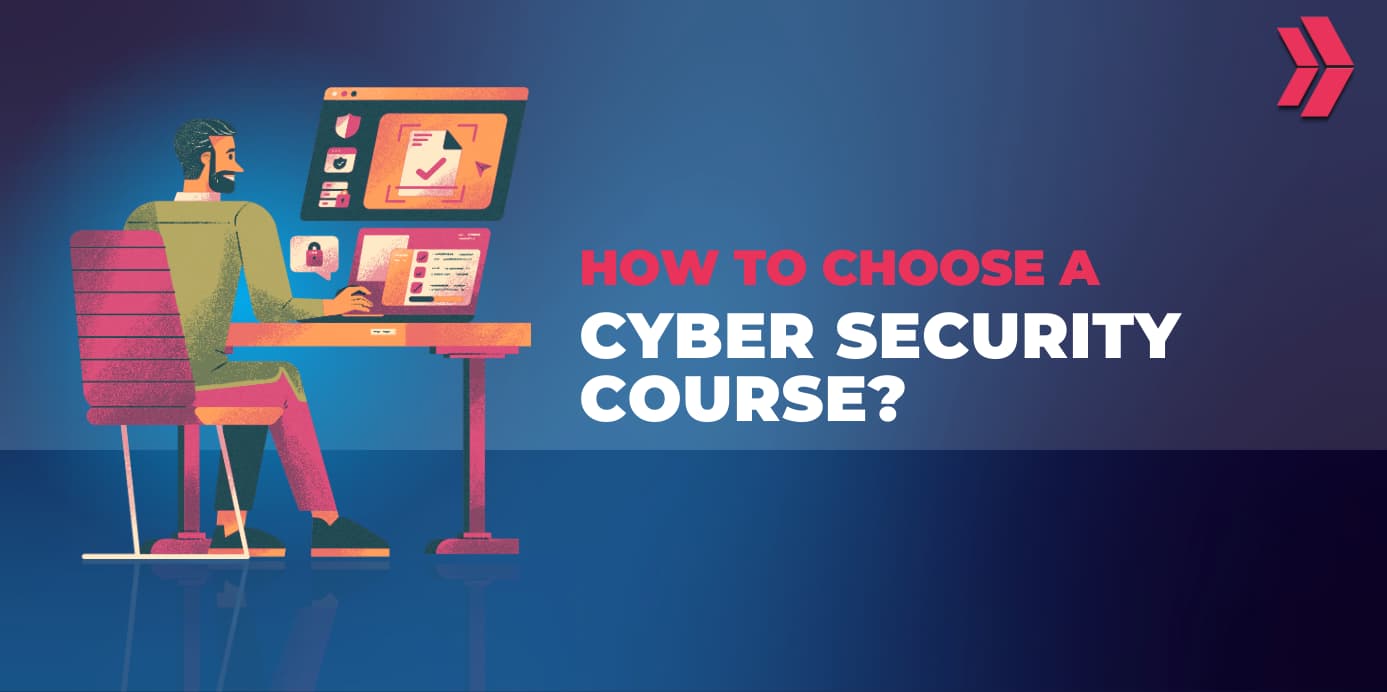With the ever-evolving threat landscape, cybersecurity frameworks present a comprehensive strategy that enables organizations to proactively identify and mitigate risks. Learning cybersecurity frameworks are fundamental for successful security efforts, providing a systematic approach that protects valuable assets against potential cyber threats.
Cybersecurity frameworks offer valuable insights into every cybersecurity career path in the public and private sectors, regardless of the organization’s size. For instance, 47.8% of organizations utilize the NIST Cybersecurity Framework globally, according to the latest statistics provided by Statista. Failure to comply with cybersecurity frameworks can result in data breaches, operational disruptions, financial and legal consequences, and reputational damage.
Incorporating resilient cybersecurity standards is crucial for professionals to learn, understand, and prepare against the threat landscape. It also ensures data, networks, and systems’ confidentiality, availability, and integrity. This article highlights the top 5 cybersecurity frameworks for protecting digital environments.
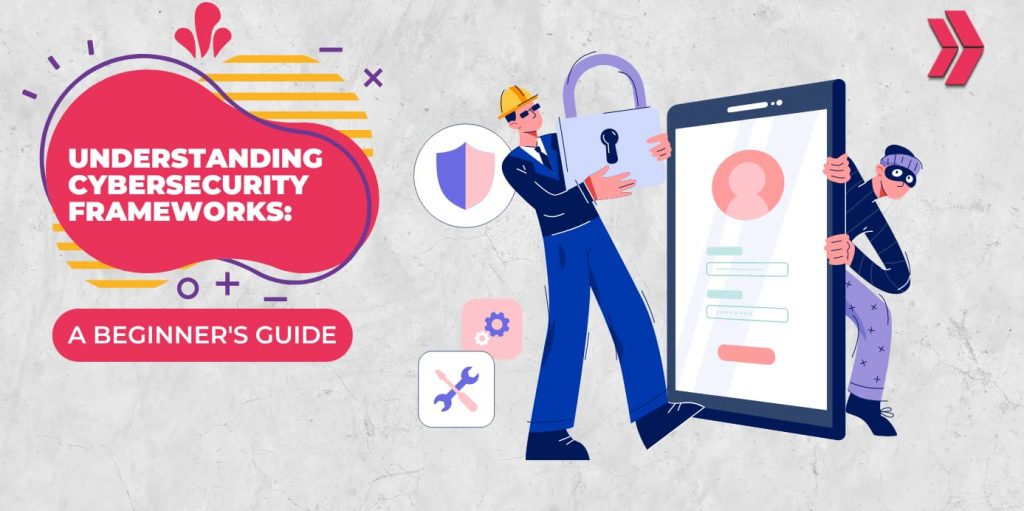
What is a Cybersecurity Framework?
A cybersecurity framework is a blueprint that enhances security posture. A cybersecurity framework constitutes a holistic approach to managing risk proactively by implementing technical standards, guidelines, and best practices. It provides a systematic methodology for detecting, evaluating, and minimizing security risks by defining and implementing the required controls, procedures, and policies.
What Are the Types of Cybersecurity Frameworks?
Cybersecurity frameworks come in various types to meet security needs. Frank Kim, a renowned cybersecurity expert and former CISO at the SANS Institute, has identified 3 primary categories for cybersecurity frameworks:
- Risk frameworks
- Program frameworks
- Control frameworks
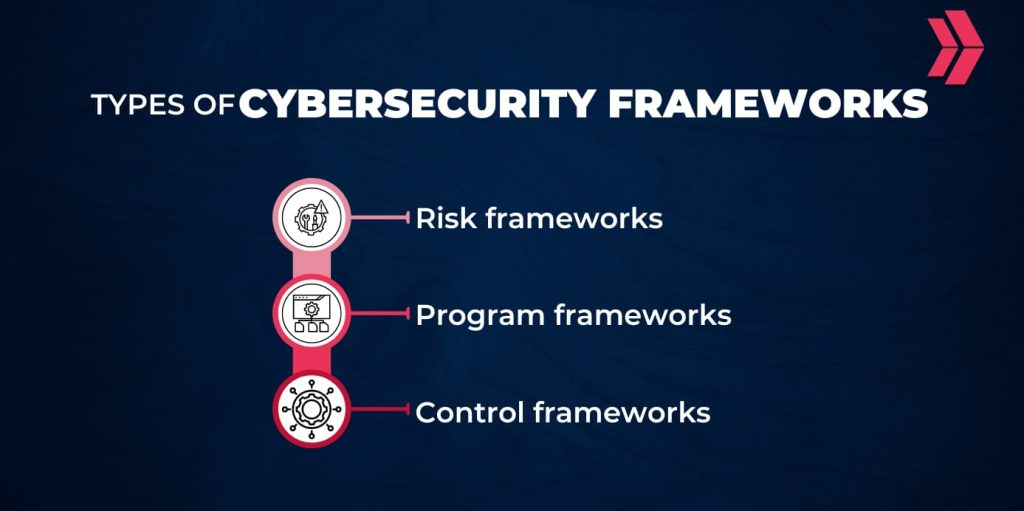
Risk frameworks
Cybersecurity risk frameworks are essential tools for organizations to manage security risks effectively. They offer a well-organized approach to risk management, enabling organizations to prevent possible threats and develop practical strategies for mitigating cyber attacks. Risk frameworks are checklists for enhancing security. Examples of widely used risk frameworks include NIST 800-30 and ISO 27005.
Program frameworks
Program frameworks are guidelines that help improve security efforts. They are roadmaps for building and maintaining a robust cybersecurity program and help to ensure that all necessary activities, such as risk assessment, training, monitoring, and incident response, are carried out effectively. The NIST Cybersecurity Framework and ISO/IEC 27001 are two examples of widely used program frameworks.
Control frameworks
Control frameworks refer to structured policies and procedures that organizations can follow to mitigate cyber threats. Control frameworks offer a fundamental approach to assessing the existing technical conditions and improving the security posture. Some examples of control frameworks include NIST 800-53, CIS Critical Security Controls, and PCI DSS. By implementing these frameworks, organizations can thoroughly evaluate their security protocols and identify gaps that require attention.
What are the Top 5 Cybersecurity Frameworks?
Frameworks form the foundation of cybersecurity, and implementing at least one from the cybersecurity frameworks list can improve the overall security posture.
Here are the top 5 cybersecurity frameworks:
- The NIST Cybersecurity Framework
- ISO/IEC 27001 and 27002
- CIS Critical Security Controls
- Payment Card Industry Data Security Standard (PCI DSS)
- MITRE ATT&CK
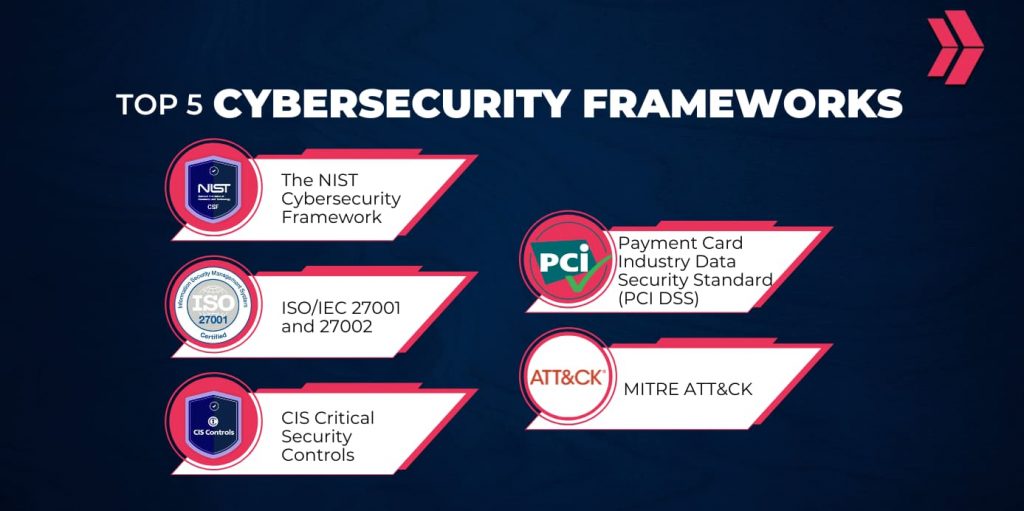
The NIST Cyber Security Framework
The NIST Cybersecurity Framework is a comprehensive, risk-based approach to detecting, preventing, and responding to cyber threats. Although developed by the US National Institute of Standards and Technology (NIST), many organizations nowadays adopt this robust framework. Similarly, initially aimed at the private sector, many governments have also embraced this standard to enhance the security posture of their organizations.
The NIST Cybersecurity Framework consists of 5 essential steps: identify, protect, detect, respond, and recover. This invaluable framework is a tool that assists different organizations in communicating and collaborating. The NIST Cybersecurity Framework serves as a universal language that promotes cooperation. Organizations can use this framework to meet regulatory requirements and demonstrate their cybersecurity dedication.
ISO/IEC 27001 and 27002
ISO/IEC 27001 is a methodical approach to implementing information security management systems (ISMS). The International Electrotechnical Commission (IEC) and the International Organization for Standardization (ISO) collaboratively developed the 27001 international standard. Implementing this framework empowers organizations to enhance their risk management capabilities by proactively detecting and mitigating security vulnerabilities in their systems.
ISO 27002 is a supplementary standard to ISO 27001, and it lays out precise controls and recommendations to help organizations develop and execute an effective ISMS. ISO 27001/27002 is the most widely adopted cybersecurity framework and is implemented by 48% of organizations, according to a recent study by ThoughtLab. These two standards offer a thorough and integrated approach to managing information security when used in conjunction.
CIS Critical Security Controls
The Center for Internet Security (CIS) is a security controls framework that provides a comprehensive inventory of operational controls and technical security measures. Security controls are classified into 3 groups: basic, foundational, and organizational, which help to identify and respond to security incidents quickly.
The CIS Controls do not cover risk analysis or management but instead focus on strengthening the resilience of technical infrastructures. The CIS controls can be helpful to any organization, especially small ones. By implementing them, organizations can enhance their systems, reduce the risk of compromises, and comply with relevant regulations and laws.
Payment Card Industry Data Security Standard (PCI DSS)
The PCI DSS is a cybersecurity framework that provides technical standards to ensure the security of credit card information. Any organization that handles credit card information must comply with this standard.
The PCI DSS requires organizations to implement robust access control mechanisms, network security protocols, and data storage practices to protect sensitive cardholder data. Encryption and tokenization technologies are also crucial to guarantee information security. Compliance with the PCI DSS is paramount in avoiding data breaches and mitigating reputational and financial damages.
MITRE ATT&CK
The MITRE Corporation has developed a comprehensive knowledge repository called the MITRE ATT&CK (Adversarial Tactics, Techniques, and Common Knowledge) Framework. The framework categorizes the tactics, techniques, and procedures (TTPs) utilized by threat actors during various stages of a cyber attack. This framework is a valuable resource for cybersecurity professionals in the government and private sector, as it helps them comprehend and analyze the behavior of threat actors.
The MITRE ATT&CK framework provides a detailed approach to recognizing, categorizing, and responding to threats using real-world cybersecurity incidents. Numerous contemporary security tools and platforms have been integrated with the MITRE ATT&CK framework, including EDR, SIEM, and cloud solutions. By leveraging MITRE ATT&CK, organizations can better understand adversary behavior, develop effective security strategies, and prioritize their security investments.
How to Choose a Cybersecurity Framework?
Choosing a suitable cybersecurity framework is crucial to managing an organization’s risk management and adopting a proactive approach. When selecting a security framework, organizations must evaluate various factors to ensure the security measures align with their specific requirements. These factors may include an organization’s complexity, size, and formation.
Moreover, compatibility with existing policies, maintenance efforts, and potential impact on security performance are significant aspects that require careful consideration. Selecting a framework that responds to the changing threat landscape is crucial. By considering these factors, organizations can identify the most appropriate security framework that meets their specific needs while enhancing their overall cybersecurity posture.
Beyond Frameworks: Nurturing Cybersecurity Skills and Expertise
Building a skilled workforce involves more than just possessing technical cybersecurity skills. A comprehensive approach is necessary to nurture cybersecurity skills and expertise, which includes technical proficiency and a proactive mindset to tackle the constantly evolving cyber threat landscape.
Employers have realized that developing resilient cybersecurity talent requires going beyond traditional qualifications.
Organizations must employ various strategies, such as implementing upskilling programs and providing mentorship support for training. Creating a comfortable work environment that fosters creativity and a proactive mindset is paramount. Furthermore, organizations should facilitate information sharing among employees and promote continuous learning to nurture cybersecurity skills and expertise.
Cybersecurity Career Paths: How Do You Navigate Opportunities
In a Digital Landscape?
The field of cybersecurity offers numerous career opportunities that align with the interests, skills, and experiences of individuals with diverse backgrounds and perspectives. There are various job roles available at different levels, providing candidates with many options to choose from. Although the cybersecurity career path was traditionally associated with information technology, it has expanded its reach to various public and private industries, such as finance and healthcare.
In conclusion, cybersecurity frameworks have become crucial for organizations to secure sensitive assets and build a safe digital ecosystem. These frameworks provide a systematic approach and offer distinct features and advantages to meet specific needs. By adopting a cybersecurity framework, organizations can take proactive measures to protect against cyber threats, implement system hardening procedures, and prepare themselves to respond to security incidents effectively.


